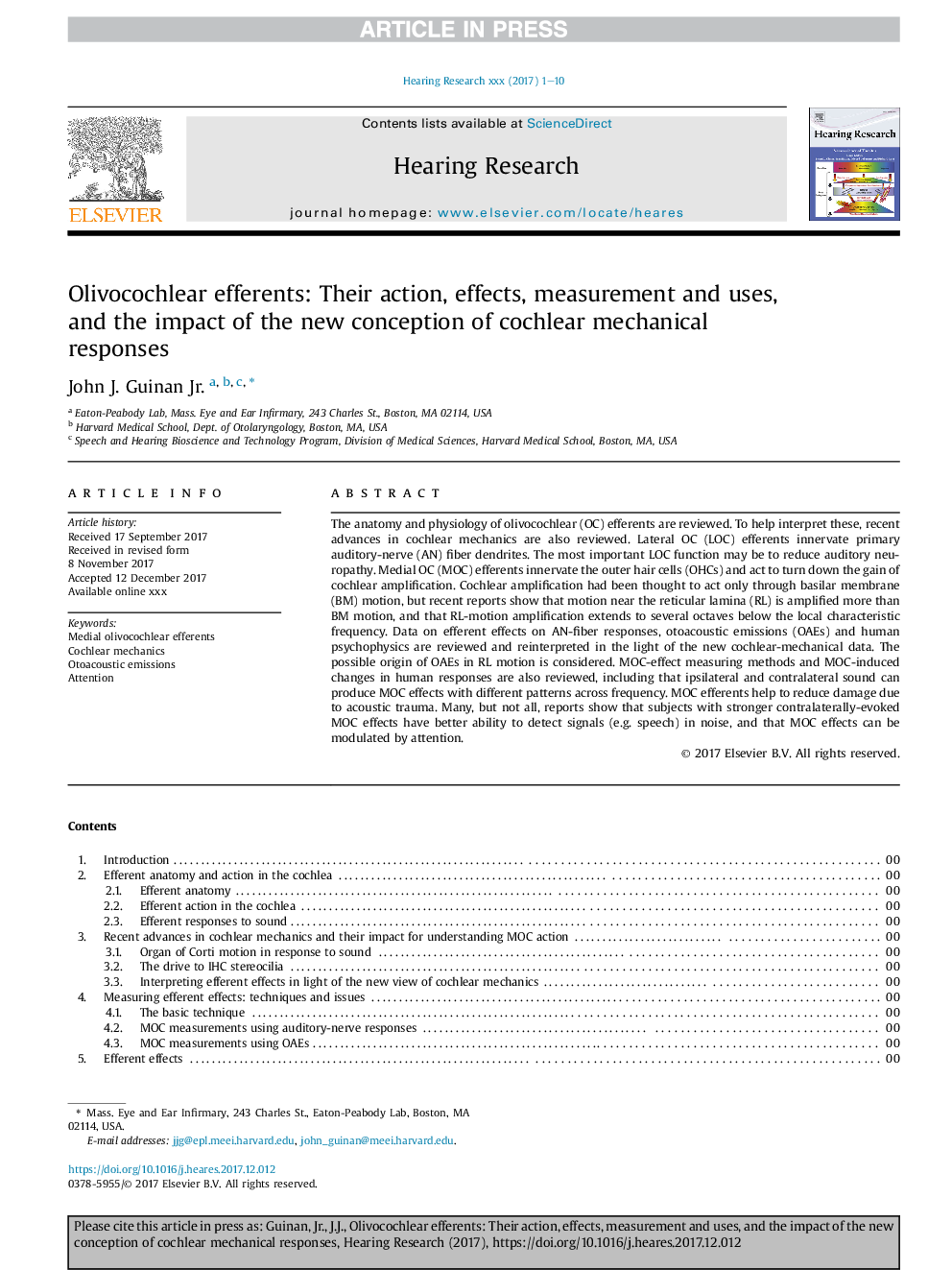| کد مقاله | کد نشریه | سال انتشار | مقاله انگلیسی | نسخه تمام متن |
|---|---|---|---|---|
| 8842379 | 1615538 | 2018 | 10 صفحه PDF | دانلود رایگان |
عنوان انگلیسی مقاله ISI
Olivocochlear efferents: Their action, effects, measurement and uses, and the impact of the new conception of cochlear mechanical responses
ترجمه فارسی عنوان
الیوموکوکلهار: عملکرد، اثرات، اندازه گیری و کاربرد آنها و تأثیر مفهوم جدید واکنشهای مکانیک کوهلر
دانلود مقاله + سفارش ترجمه
دانلود مقاله ISI انگلیسی
رایگان برای ایرانیان
کلمات کلیدی
موضوعات مرتبط
علوم زیستی و بیوفناوری
علم عصب شناسی
سیستم های حسی
چکیده انگلیسی
The anatomy and physiology of olivocochlear (OC) efferents are reviewed. To help interpret these, recent advances in cochlear mechanics are also reviewed. Lateral OC (LOC) efferents innervate primary auditory-nerve (AN) fiber dendrites. The most important LOC function may be to reduce auditory neuropathy. Medial OC (MOC) efferents innervate the outer hair cells (OHCs) and act to turn down the gain of cochlear amplification. Cochlear amplification had been thought to act only through basilar membrane (BM) motion, but recent reports show that motion near the reticular lamina (RL) is amplified more than BM motion, and that RL-motion amplification extends to several octaves below the local characteristic frequency. Data on efferent effects on AN-fiber responses, otoacoustic emissions (OAEs) and human psychophysics are reviewed and reinterpreted in the light of the new cochlear-mechanical data. The possible origin of OAEs in RL motion is considered. MOC-effect measuring methods and MOC-induced changes in human responses are also reviewed, including that ipsilateral and contralateral sound can produce MOC effects with different patterns across frequency. MOC efferents help to reduce damage due to acoustic trauma. Many, but not all, reports show that subjects with stronger contralaterally-evoked MOC effects have better ability to detect signals (e.g. speech) in noise, and that MOC effects can be modulated by attention.
ناشر
Database: Elsevier - ScienceDirect (ساینس دایرکت)
Journal: Hearing Research - Volume 362, May 2018, Pages 38-47
Journal: Hearing Research - Volume 362, May 2018, Pages 38-47
نویسندگان
John J. Jr.,
